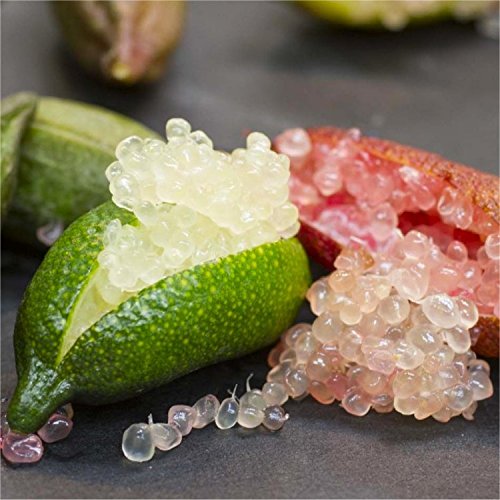How to Grow Delicious Pineapples Right in Your Own Home
How to Grow Pineapple at Home: A Comprehensive Guide
Growing pineapple at home is a rewarding and exciting endeavor. While pineapples are typically associated with tropical climates, it’s possible to cultivate this exotic fruit indoors or in your garden with the right care and conditions. This guide will walk you through the process of growing your own pineapple, from selecting the right plant to nurturing it for a fruitful harvest.
1. Understanding Pineapple Growth
Pineapples (Ananas comosus) are tropical plants that thrive in warm temperatures and ample sunlight. They belong to the Bromeliaceae family and are known for their spiky, sword-like leaves and sweet, juicy fruit. Pineapples are unique because they grow from the center of the plant, which is formed by the fusion of individual flowers.
2. Choosing the Right Pineapple Variety
When growing pineapples at home, it’s essential to select a variety suited for your environment. While there are many pineapple varieties, the most common for home gardening is the 'Queen' variety, which is compact and produces small, sweet fruits. Other suitable varieties include 'Red Spanish' and 'Smooth Cayenne.' If you’re growing indoors, opt for dwarf varieties that fit well in pots.
3. Obtaining a Pineapple Plant or Top
You can start growing pineapples from either a young plant or the top of a mature pineapple fruit. Here’s how to do both:
From a Pineapple Top:
- Select a Pineapple: Choose a ripe, healthy pineapple with vibrant green leaves and a firm body. Avoid pineapples with any signs of mold or decay.
- Prepare the Top: Twist off the top of the pineapple or cut it off with a sharp knife, ensuring you leave about an inch of fruit attached. Remove any excess fruit flesh and trim off a few of the lower leaves to expose the base of the crown.
- Rooting: Place the pineapple top in a jar of water, making sure the base is submerged while the leaves remain above the water line. Change the water every few days to prevent stagnation. After a few weeks, roots should begin to develop.
From a Pineapple Plant:
- Purchase a Pineapple Plant: If you prefer, you can buy a young pineapple plant from a nursery or online. Look for a healthy plant with vibrant green leaves and no signs of pests or disease.
4. Preparing the Planting Container
Pineapples require a well-draining growing medium and ample space for their roots. Here’s how to prepare the container:
- Choose a Container: Select a pot with drainage holes that is at least 8-10 inches in diameter. If growing outdoors, ensure the pot is large enough to accommodate the plant’s growth.
- Soil: Use a well-draining potting mix, preferably one formulated for cacti or succulents. You can also create your own mix by combining equal parts of peat moss, perlite, and coarse sand.
5. Planting the Pineapple
- Plant the Top: Once the pineapple top has developed roots, it’s time to transplant it into the prepared container. Fill the pot with the potting mix, leaving about an inch of space at the top. Plant the pineapple top about 1-2 inches deep in the soil, ensuring the base is well-covered and the leaves are above the soil line.
- Planting a Young Plant: If using a young pineapple plant, plant it in the same manner, ensuring the root ball is level with the soil surface.

6. Caring for Your Pineapple Plant
Light:
Pineapples require plenty of sunlight to thrive. Place your pineapple plant in a location that receives at least 6-8 hours of direct sunlight per day. If growing indoors, consider using a grow light to supplement natural light.
Temperature:
Pineapples prefer warm temperatures between 65-85°F (18-29°C). Protect the plant from frost and cold drafts. If you live in a cooler climate, consider growing the pineapple indoors or using a greenhouse.
Watering:
Keep the soil consistently moist but not waterlogged. Water the plant when the top inch of soil feels dry. Reduce watering during the winter months when the plant’s growth slows down.
Fertilizing:
Feed your pineapple plant with a balanced, water-soluble fertilizer every 6-8 weeks during the growing season (spring and summer). Avoid over-fertilizing, as this can lead to excessive leaf growth at the expense of fruit production.
Pruning and Maintenance:
Remove any dead or yellowing leaves to maintain the plant’s health and appearance. Pineapple plants are relatively low-maintenance but watch for signs of pests or diseases, such as spider mites or fungal infections. Treat any issues promptly with appropriate measures.
7. Pollination and Fruiting
Pineapples are self-pollinating, meaning they don’t require other plants to produce fruit. However, if growing multiple plants, it can enhance fruit development. Once the plant matures, it will produce a flower spike at the center, which eventually develops into the pineapple fruit.
The fruiting process can take 18-24 months from planting, so patience is key. The fruit will start as a small, green cone and gradually develop its characteristic golden color. Harvest the pineapple when it turns a golden-yellow color and emits a sweet aroma.
8. Harvesting and Enjoying Your Pineapple
To harvest, use a sharp knife to cut the pineapple from the plant, leaving a small portion of the crown attached. Be careful not to damage the plant, as it may produce additional fruit later. Enjoy your homegrown pineapple fresh or use it in various recipes, such as smoothies, desserts, and savory dishes.
9. Troubleshooting Common Issues
Leaf Browning:
This can be due to low humidity or over-fertilization. Ensure the plant is in a humid environment and reduce the amount of fertilizer used.
Pest Infestations:
Check regularly for pests like spider mites or mealybugs. Use insecticidal soap or neem oil to treat infestations.
Poor Fruit Development:
Ensure the plant receives enough light, water, and nutrients. Be patient, as fruiting can take time.
Conclusion
Growing pineapples at home is a fun and fulfilling project that adds a touch of tropical paradise to your space. With the right care, you can successfully cultivate this exotic fruit, enjoying the satisfaction of harvesting and eating a pineapple grown with your own hands. Whether you choose to grow it indoors or in your garden, following these guidelines will help you nurture a thriving pineapple plant and savor its delicious rewards.



Leave a comment
This site is protected by hCaptcha and the hCaptcha Privacy Policy and Terms of Service apply.